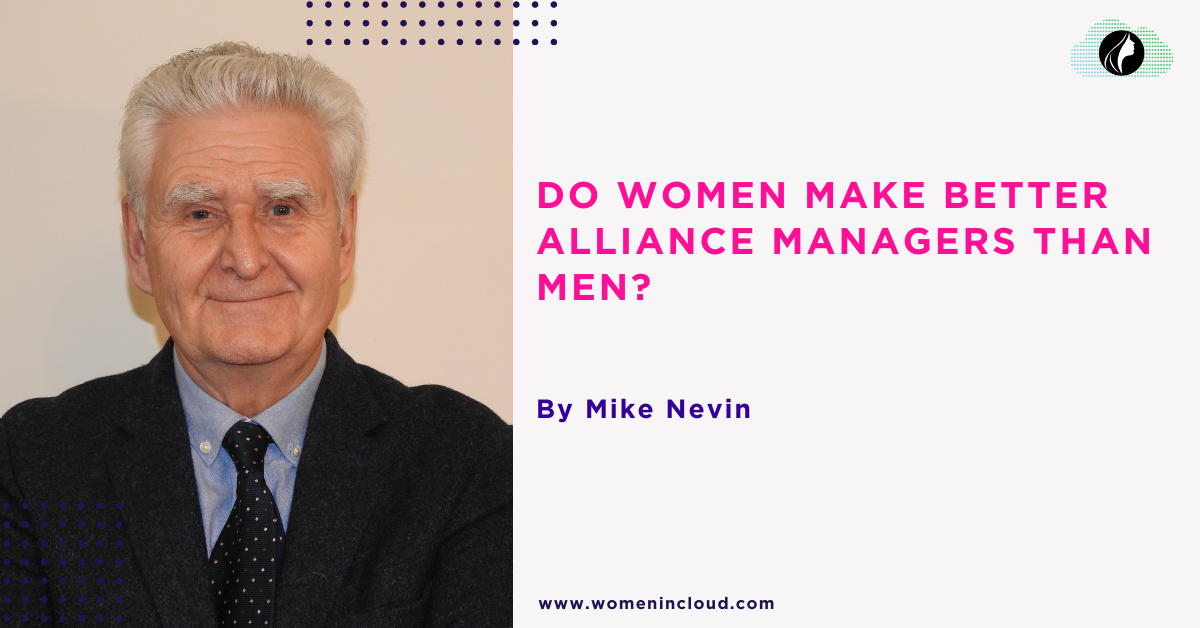Men Are from Mars, Women Are from Venus (1993) is a book written by an American author and relationship counselor, John Gray. It suggests that there are incompatible differences between how men and women act in any situation and showcase the conflict that arises from these different viewpoints.
I was recently reminded of the book when I facilitated an alliance workshop between two large High Tech partners.
One partner was a global systems integrator and consultancy; the other was an equally large (and international) software company. The workshop was to discuss the current state of the worldwide alliance relationship they had formed many years ago and to reset the alliance’s vision.
There were many senior key stakeholders at the workshop from both sides representing: product lines, consulting practices, sales, marketing, R&D, and corporate planning. However, I focused mainly on the two global alliance managers representing both sides. Both are very experienced Vice Presidents in their respective companies, and both were responsible for the relationship globally. By coincidence, both were from the USA. The only difference was that one was male and one was female. Let’s call them Sally and Simon.
During the workshop, we addressed the question of ‘Joint Business Value Propositions,’ and I asked the question:
“What is the Joint Business Value Proposition for this alliance?
What is different and exciting to the customers about combining both of your company’s products and services?”
Simon immediately jumped right in:
“Well, it’s obvious. We control a large degree of market share in our chosen fields, and we are both acknowledged leaders in our respective products and services. What I need is to agree on a target figure with Sally about how many of our software licenses her company will sell this year.”
Sally replied: “What are we trying to achieve with our offerings here? Between us, we need to understand better how we come across to the market, and I’d like to know more about Simon’s business strategy and how my team can help him.”
Simon: “Great! That’s just what I said (…) now, let me tell you in detail about my sales targets territory by territory around the world, and we can then agree what numbers you will allocate.”
And before I could stop him, he jumped up to the whiteboard and started doing just that.
The incident reminded me of the Mars versus Venus debate sparked years ago.
If you look again at Simon’s language, it’s all about: Me, I, my targets, objectives, and territories.
Whereas if you look at Sally’s conversation, it’s about: Us, We, our team, our common goals, and objectives.
It might be a minor point, but it indicates a deeper mindset. One professional personally focuses on himself, while the other concentrates collaboratively on the team.
While I was flying home, I meditated on our conversations in the workshop (I do that a lot these days – ruminate, that is!) I confess I couldn’t decide whether the fundamental difference highlighted by the two professionals was between men and women or between sales executives and alliance executives.
In traditional sales, the business landscape is quite clear. I am a seller, and you are a buyer. My job is to convince you how my products and services suit your challenges and needs.
I will use appropriate and suitable tools and methodologies to help me do that (e.g., Challenger Sales, Consultative Selling, SPIN Selling, Relationship Selling, Closing Techniques, and on and on). It’s all about you and me: your challenges and my products. It’s a binary-type conversation. I win, you ‘lose’ (because you pay out the highest price I can negotiate).
On the other hand, in alliance selling, it’s a little more subtle. Sally isn’t trying to sell to Simon, and she’s trying to understand how they can both together sell to an (as yet) unknown customer and do it most efficiently and effectively possible.
The conversation is peppered with words like Us, Our, Joint, Collaborative, Together, Consensus, Joined-Up Approach, and so on. During my flight, I thought about two different scenarios:
- The different backgrounds, mores, and language used to describe men and women and typically,
- The different backgrounds, mores, and language used to describe salespeople and alliance people typically
In both cases, I daydreamed about the words that I had heard used in the past to describe the two groups, and I wondered if there was some connection:
Don’t get me wrong. I am not saying that you can’t have good male alliance managers, and I’m not saying that you can’t have aggressive and hard-driving female executives. Still, the more I thought about my own experiences with all four groups (men, women, sales, and alliances), the more I resonated with the differences and the apparent connection between the two groups.
Could it be that women are more genetically ‘programmed’ over thousands of years to view harmony and collaboration in the family unit as preferable to personal advancement?
The jolt that I got as I hit the runway in Birmingham (my hometown) jerked me awake, and afterward, I couldn’t decide whether it was clear thinking and deep insight or pure gibberish?!
As a highly experienced international strategic alliance consultant, I see great opportunities in events such as the WICxAnnualSummit 2022 to learn from female top leaders of the tech industry. Each person has something to teach, but also something to learn from each other.
For that reason, I definitely will be attending WIC’s Annual Summit. I strongly encourage you to join too. We’ll also have the chance to meet! I’m excited about that.
To get more information about the summit, you can visit the event’s website. And don’t forget! Now you have a 15% OFF on your ticket. So there are even more reasons to assist. For that, use the code 15-OFF.
Also, don’t forget to join the WIC digital network, and together, let’s create economic access for women in the cloud economy.




